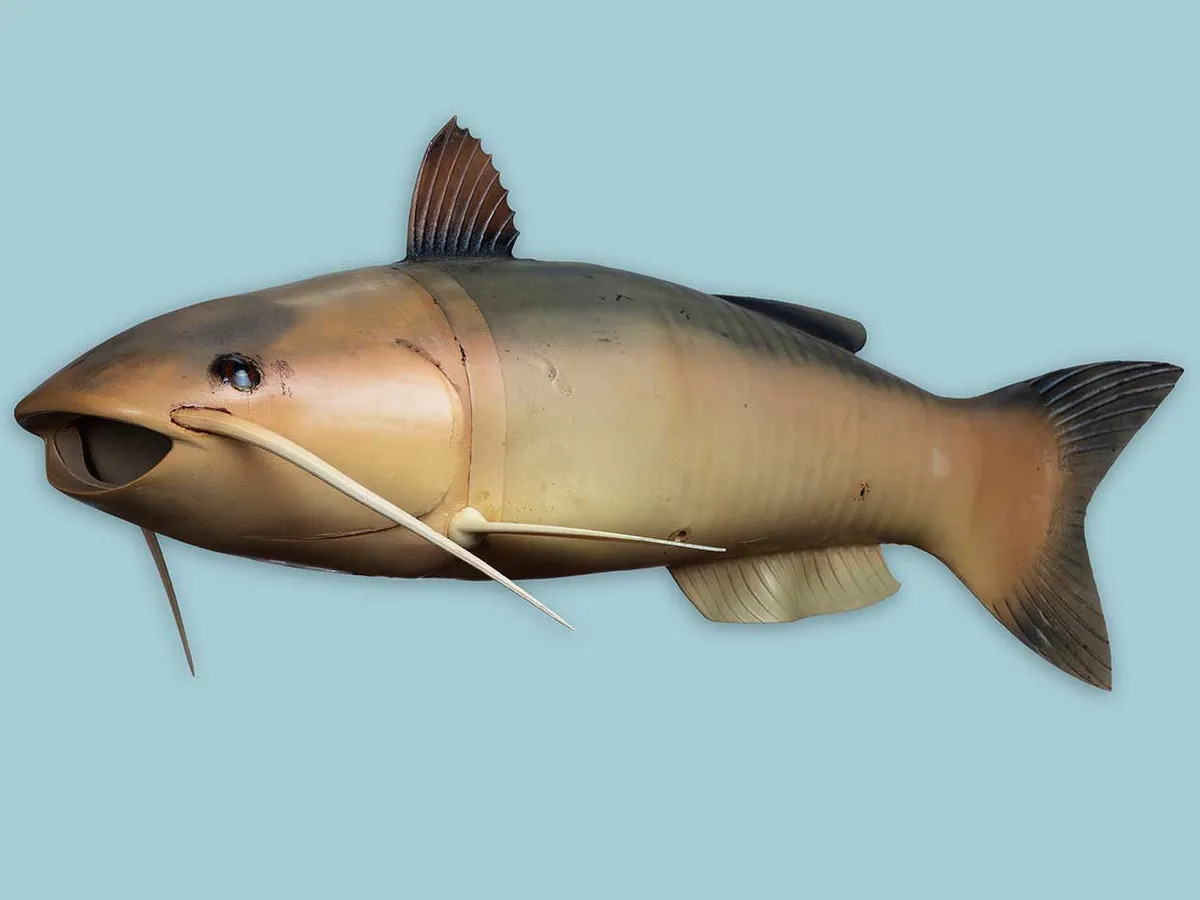Robot fish “Charlie” Photo: Central Intelligence Agency.
Truth is stranger than fiction, but it is because fiction is obliged to stick to possibilities; Truth isn’t.” ― Mark Twain, Following the Equator: A Journey Around the World.
The Cold War was a long and tense period of geopolitical conflict and espionage that lasted from 1947 to 1991. It involved two superpowers, the United States and the Soviet Union, and their respective allies, who competed for global influence and dominance. One of the main aspects of the Cold W ar was the covert operations and spy missions that both sides conducted to gather information, sabotage, and deceive their opponents. To carry out these missions, both sides developed and deployed a variety of spy gadgets to gather intelligence, sabotage, or even assassinate their enemies. Many of these gadgets were very ingenious and some even quite bizarre.
Let’s take a look at ten examples of the fascinating and, in a couple of cases, notorious spy gadgets of the Cold War era, and how they were used in the shadowy world of espionage:
Five-Second Mask: This was a prosthetic mask that could be applied and removed in just five seconds, allowing agents to change their appearance quickly and discreetly. The mask was invented by Jonna Mendez, the CIA’s Chief of Disguise in the CIA’s Office of Technical Service, who collaborated with Hollywood special effects experts to create It. The mask was full face latex mask that was custom molded to the wearer’s face and could alter their facial structure and features. The mask was part of a still classified program known as MAGIC. It was the culmination of ten years of work at CIA. The technology has advanced much further since then.
Umbrella Gun: A covert weapon disguised as an umbrella, that had a hidden pneumatic device capable of firing a 1.70mm (0.067”) diameter round pellet containing poison. The most famous use of this gadget was the assassination of Georgi Markov, a Bulgarian defector and journalist, in London in 1978. The assassin used an umbrella gun to inject a pellet into Markov’s leg, causing his death three days later. Scientists hypothesize that the pellet contained the poison ricin, for which there is no antidote. A replica is on display at the International Spy Museum in Washington DC
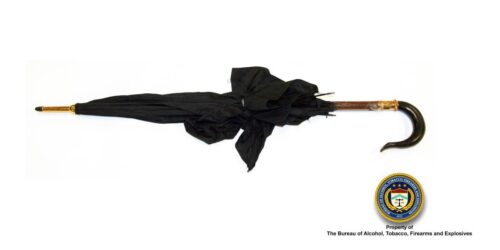
Kiss of Death Lipstick Pistol: A single shot 4.5mm covert firearm disguised as a lipstick holder. It was used by the KGB. It is fired by pressing the barrel into the victim. An example found at an American checkpoint in West Berlin is now on display at the International Spy Museum in Washington DC.
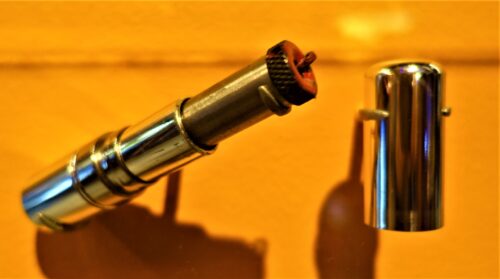
Pigeon Camera: A miniature camera attached to the breast of a trained pigeon, used to take aerial photographs of enemy targets. The camera was programmed to take still images at intervals, while a tiny motor advanced the film and cocked the shutter. The thought was pigeons could fly over areas that were inaccessible or too risky, but the birds had trouble flying over the exact locations CIA needed images of and the program was scrapped.
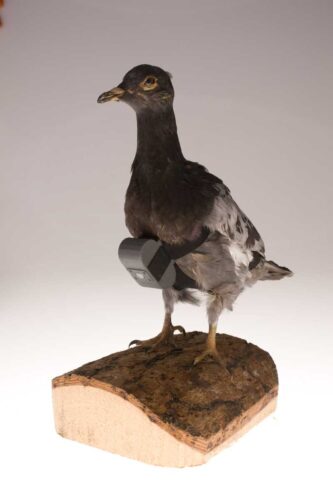
Modified Makeup Compact: This was a cosmetic case that contained a secret coded message or information. The code could be revealed by tilting the mirror at a certain angle. This concealment method was used by female agents to communicate with their handlers or contacts.
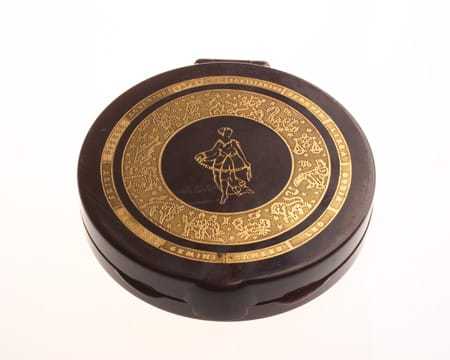
Robot Fish “Charlie”: An unmanned underwater vehicle (UUV) shaped like a catfish, used to explore the possibilities of underwater robot technology. Charlie was equipped with sensors and cameras and could swim and maneuver like a real fish. He was an experiment by the CIA’s Office of Research and Development, but never saw any action in the field. The reason for their interest in such a “fish” remains classified.
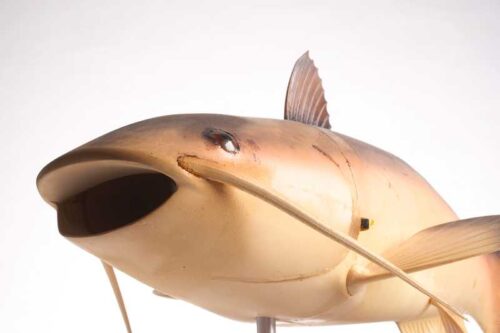
Insectothopter: This was an insect-sized flying machine that looked like a dragonfly. It was hand painted to look like one. It was intended to provide proof of concept that micro-UAVs (unmanned aerial vehicles) could collect intelligence. It employed a small amount of gas to drive a tiny engine that drove the movement of its wings up and down to provide lift and thrust, and excess gas was vented out the rear for extra thrust. The first example was capable of flying several hundred yards. Although the flight tests were impressive, it proved uncontrollable in a crosswind.
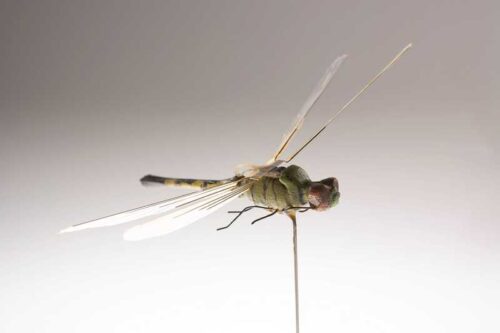
Dead Drop Spike: A type of concealment consisting of a hollow spike that could be pushed into the ground, used to pass messages, documents or film between agents without meeting face to face. This gadget was useful for avoiding detection or capture by enemy forces. It is resistant to water and mold and can be buried in the soil or submerged in a creek for later retrieval. The spike has been in use since the late 1960s.
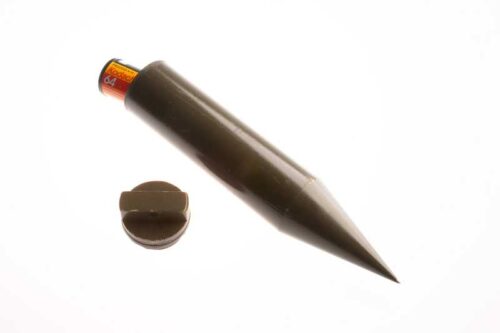
Radio Receiver in Modified Smoking Pipe: A subminiature radio receiver is concealed in this modified smoking pipe. The user can inconspicuously receive transmissions by biting down on the pipe stem. The user hears the sound via “bone conduction”. Bone conduction allows sound to be transmitted to the inner ear through the bones of the skull, bypassing the eardrum. A person can perceive audio content without others hearing it.
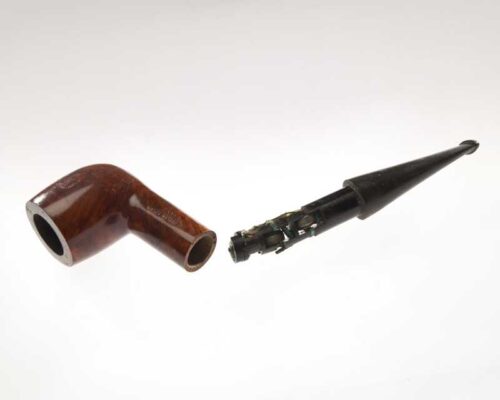
Great Seal Bug: A listening device hidden inside a wooden seal of the United States of America that was presented as a gift to the US ambassador in Moscow by Soviet children. Also referred to as “The Thing”, it had no batteries or wires, but was activated by high frequency radio waves beamed at it by the Soviets from a car parked outside of the Ambassador’s residence. It used the energy of the incoming signal to transmit detected sound waves, including the Ambassador’s private conversations to an external receiver. The seal was hung in the office of the Ambassador’s residence, where it remained until its discovery in 1952, seven years after its installation.
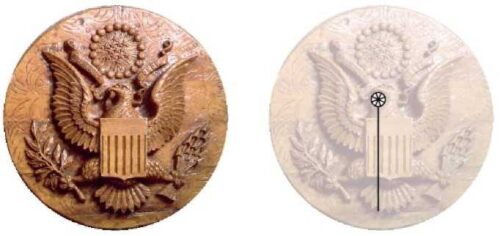
These are just a few examples of the remarkable spy gadgets that were used during the Cold War era. They demonstrate the creativity, ingenuity, and daring of the spies and their handlers who risked their lives in the name of national security. They also reveal the fascinating history of spycraft and technology that shaped the course of the Cold War and beyond.
Want more? Check out the CIA Museum and the International Spy Museum
CIA Museum
The CIA Museum is a national archive that showcases the history and culture of intelligence in the United States. It is located at the CIA Headquarters in Langley, Virginia. It is not open to the public due to security reasons, but some of the exhibits are featured online. The museum has more than 3,500 artifacts that span from the era of the Office of Strategic Services (OSS), the CIA’s predecessor during World War II, to the present day. The museum displays items such as spy gadgets, weapons, clothing, equipment, and memorabilia that were used or developed by intelligence officers and agents. The museum also partners with other museums and institutions to create public exhibitions that highlight the role of intelligence in the broader American experience.
International Spy Museum
The International Spy Museum is a unique attraction in Washington DC that showcases the history, techniques, and artifacts of espionage from around the world. The museum features interactive exhibits, immersive experiences, and rare spy gadgets that reveal the secrets of spies and spymasters. Visitors can explore the stories of famous spies, learn about the tools and methods of covert operations, and test their own skills in spy challenges. The museum also hosts public programs, special events, and educational activities for all ages. The International Spy Museum is located at 700 L’Enfant Plaza, SW, Washington, DC 20024, and is open daily from 9:00 am to 7:00 pm. Tickets can be purchased online or at the museum entrance.
Sources
CIA Museum
CIA.gov
International Spy Museum
SpyMuseum.org
*The views and opinions expressed on this website are solely those of the original authors and contributors. These views and opinions do not necessarily represent those of Spotter Up Magazine, the administrative staff, and/or any/all contributors to this site.

